Legendary Auto Designer Marcello Gandini Passed Away Last Week. We Remember 10 of His Most Iconic Cars.

- Oops!Something went wrong.Please try again later.
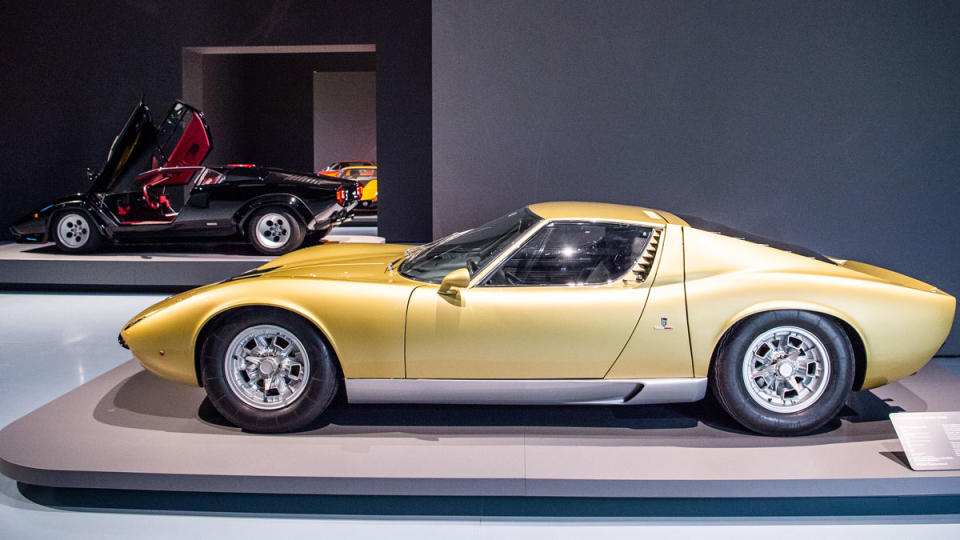
Marcello Gandini passed away at the age of 85 on March 13, 2024. To some of us, he was the most influential automotive designer in our car-crazy lives. Gandini created during a time when audacity and rule-breaking were uncommon traits, but desperately needed. Disruption—especially in Italy—was in the air, and Gandini was its agent.
Gandini—working for Bertone from 1965 until launching out on his own in 1980—was responsible for designs that etched themselves into the imagination of every car lover who had a pulse. We all know the most popular among them. His Lamborghini Miura was unsurpassable. But then came the Countach, which outdistanced its Raging Bull predecessor at every turn. His concept cars were greater still.
Gandini was as humble a person as I’ve ever met, yet his legacy, and his greatest automobiles, are titanic. I joined Lamborghini for the celebration of the 50th anniversary of the Miura, whose guests of honor were the men most responsible for the seminal model, Giampaolo Dallara, Paolo Stanzani, and Marcello Gandini. Only Bob Wallace, its development driver who died in 2013, was absent.
I sat at Gandini’s right side during dinner, and through an interpreter, he shared thoughts about his designs. What struck me was his modesty as we talked about the cars he penned. About the Miura, he remarked, “the wheels are set too far in.” I imagined Michelangelo apologizing for his David.
A shortlist of Marcello Gandini’s masterworks follows. There are innumerable others, but these 10 examples—favorites of this enthusiast—amply illustrate his genius, one impossible to express in today’s automotive world.
Lamborghini Miura
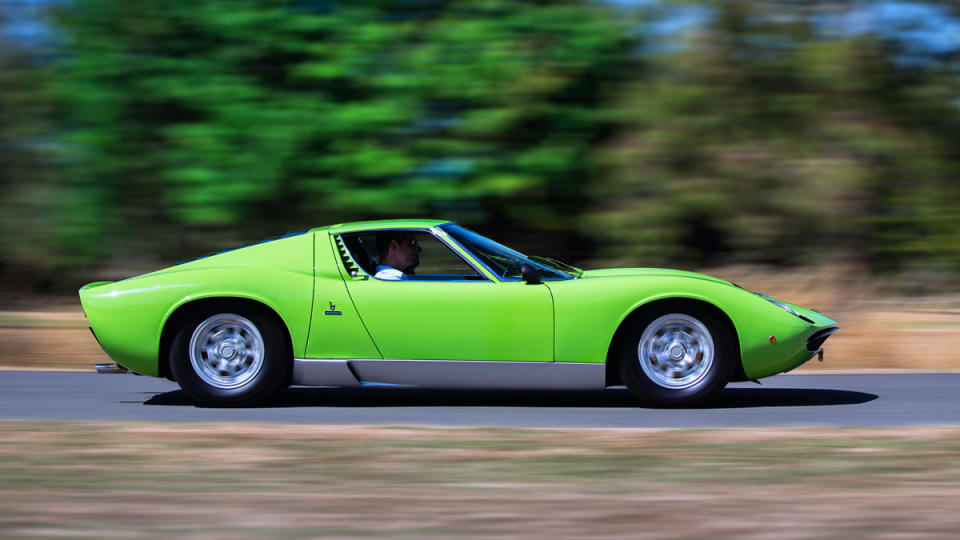
Things were never the same after the first Lamborghini Miura was parked in the Monte Carlo Casino Square in 1966. It began as an after-hours project by Dallara, Stanzani, and Wallace, who presented it to Lamborghini in 1965. Bertone was commissioned to design the body, and the rest is history. With 762 produced from 1966 until 1973—in three successive series of P400, P400S, and P400SV—the Miura is the quintessential low-slung, two-seat Italian sports car of the 1960s. Undeniably beautiful, it was the first road car to feature a transversely mid-mounted V-12 engine. The Miura is the most collectible model in the marque’s history, and Gandini’s design has inspired every Lamborghini since.
Lamborghini Marzal
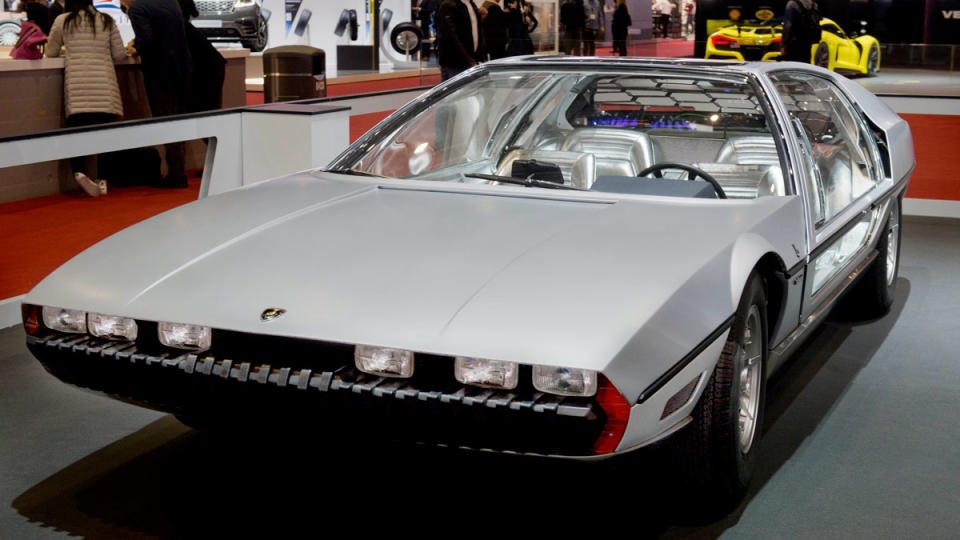
I remember seeing the Marzal at the Los Angeles Auto Expo, circa 1968, on a twirling stage surrounded by young women wearing checkered-flag miniskirts, halter tops, and silver go-go boots. To say that the entire scene made an impression on a then-13-year-old car enthusiast is an understatement. And certainly, few cars have stood the test of time so well as has Lamborghini’s one-off. It’s a testament to the enduring power of daring invention and uncompromising design that the Marzal remains as powerful today as when it shattered conventions 50 years ago. The unique concept car’s less radical doppelgänger was the Bertone Pirana, also by Gandini. Both it and the Marzal hinted at the Lamborghini Espada, yet another Gandini masterpiece.
Lamborghini Espada
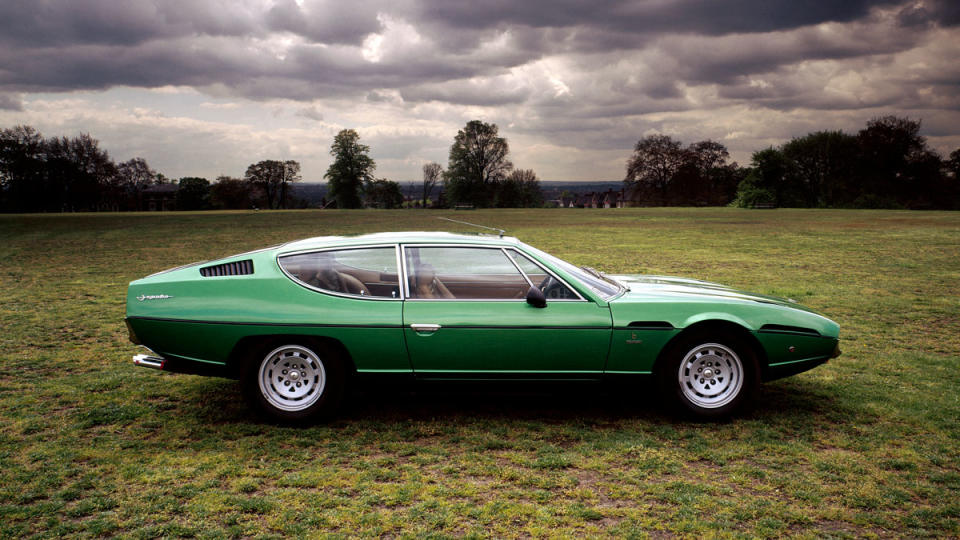
Gandini’s Espada was a remarkable exercise in packaging four adults in a long, low, and slippery GT that looked like a spaceship but drove like a normal car. Its resemblance to the Marzal and Pirana show cars was hardly coincidental, and if those had not existed, the Espada itself might have been mistaken for a one-off dream car. That 1,226 examples were made in three series, starting in 1968, through the course of a decade—the longest-running Lamborghini until the Diablo—speaks volumes about its enduring design and the practicality of a car that can transport a string quartet and their instruments at 150 mph.
Alfa Romeo Carabo
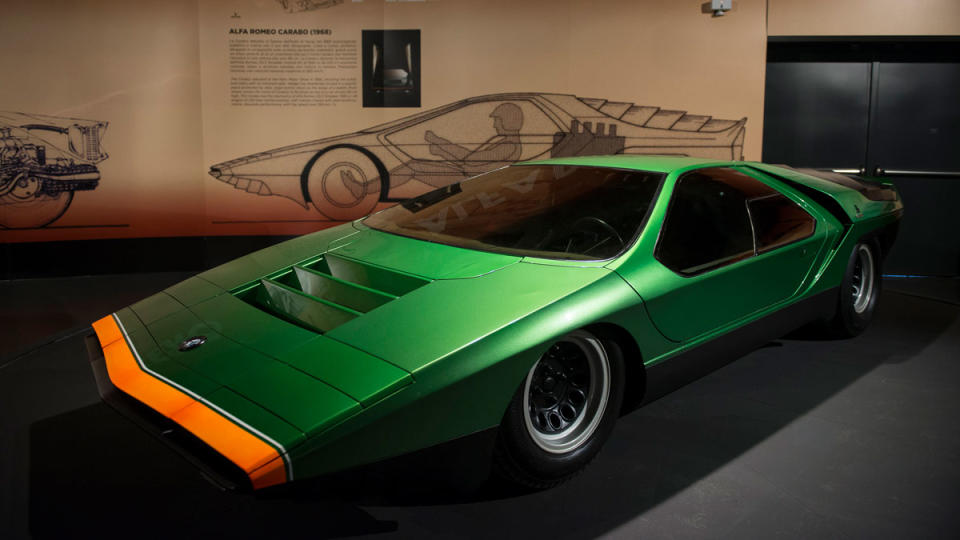
Bertone’s Alfa Romeo Carabo and Pininfarina’s 1970 Ferrari 512S Modulo (the latter designed by Paolo Martin) were the two most groundbreaking concept cars of the postwar era. While the Modulo’s potential went unrealized, the Carabo became everything a flying wedge could be. Named for a family of metallic-green ground beetles (Carabidae), it shook the stage at the 1968 Paris Motor Show and prefigured Lamborghini’s Countach and nearly every other supercar of the following decade. Unlike most concepts, it was a fully functioning vehicle, built on an Alfa Romeo 33 Stradale chassis and powered by that car’s 2.0-liter V-8 racing engine. It remains on display at the Alfa Romeo Historical Museum in Arese, Italy.
Lancia Stratos Zero
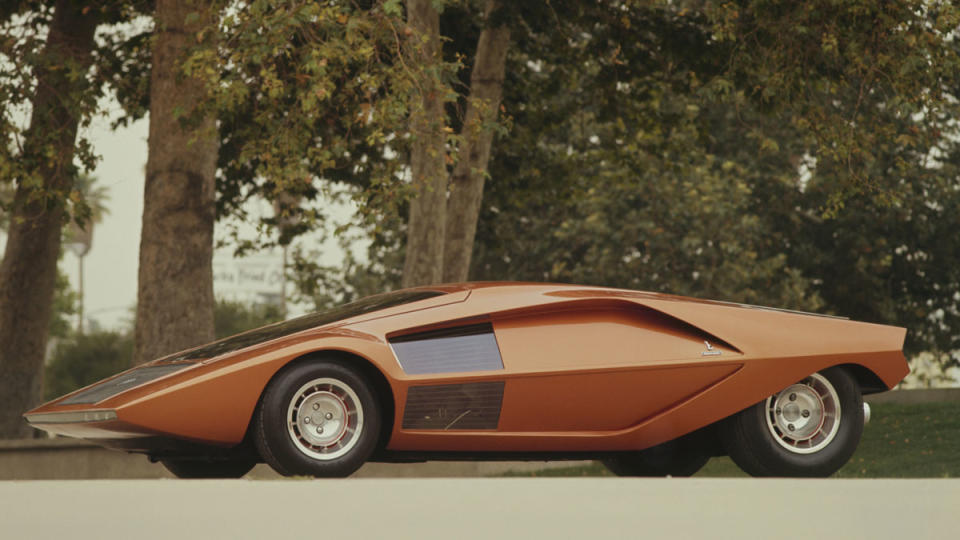
The most radical Gandini concept car of them all has got to be the Lancia Stratos Zero, unveiled at the 1970 Turin Auto Show. Walk up the rubber deck mat and into the cockpit, pull the hatch, and settle into a car whose roof is only 33 inches tall. Using the chassis of a crashed Lancia Fulvia HF1600 rally car, the Stratos Zero features a rear-mounted V-4 engine—which was nothing to write home about. The shape, however, was so essential, beautiful, and radical as to never have been equaled before or since. It was sold at auction in 2011 when Bertone liquidated its assets, a pity given the significance of this design milestone. The Zero’s influence can be seen in the series-production Lancia Stratos HF. That successful rally car was also designed by Gandini, and incorporates design cues from the Miura that are immediately recognizable.
Lamborghini Countach
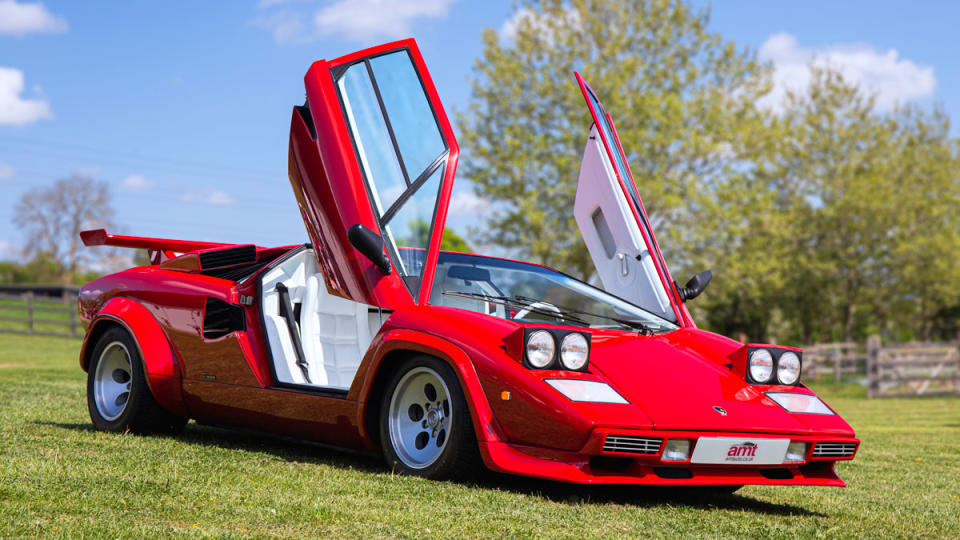
More rewarding to look at than to drive, Lamborghini’s Countach is still the poster car to beat. More kids went to sleep dreaming about a Countach than any other car in history. The successor to the Miura had a V-12 engine positioned longitudinally behind the two-seat cabin. The 1971 prototype LP500 was informed by Gandini’s Carabo and Stratos Zero. Fewer than 2,000 Countach examples (in several variants) were made through 1990, and of those, the first series LP400, with 158 built from 1974 to 1977, is the purest in form and by far the most collectible. The bloated 25th Anniversary Edition models, from 1988 through 1990, recall Elvis in a white leisure suit.
Ferrari 308 GT4
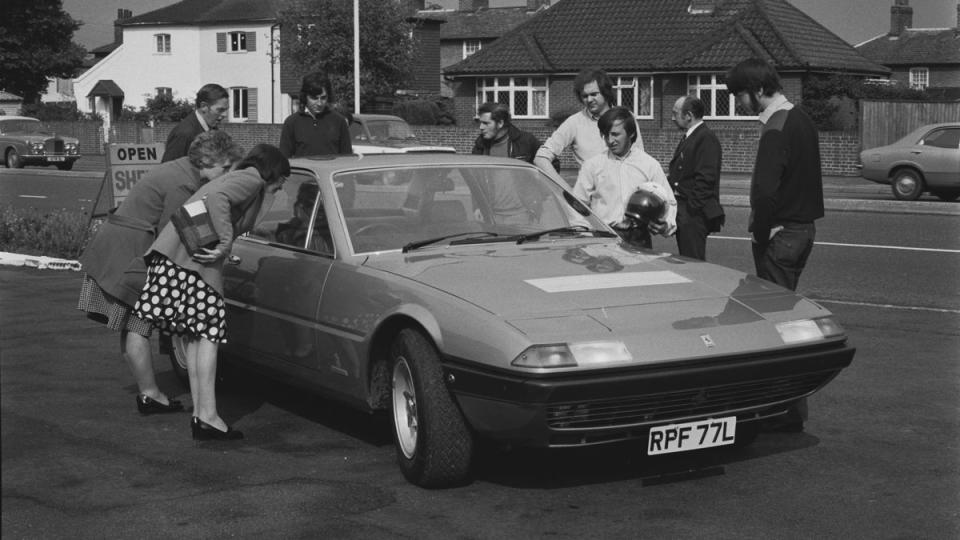
Styling house Bertone is almost a total stranger to Ferrari, whose cars from the 1960s onward were predominantly designed by Pininfarina. The first production Ferrari powered by a mid-engine V-8, the GT4, was also a 2+2 design made from 1973 through 1980. Its wedge shape was pure Gandini, and a resemblance to his Lamborghini Urraco was not coincidental, which might explain why he was never hired to design another car for Maranello. Launched as a Dino, it finally got its Prancing Horse badge in 1976, and today is considered a full-fledged Ferrari. Its design, initially shunned by Ferraristi, has not only worn the years well, but looks better than ever in comparison to most of its contemporaries.
Maserati Khamsin
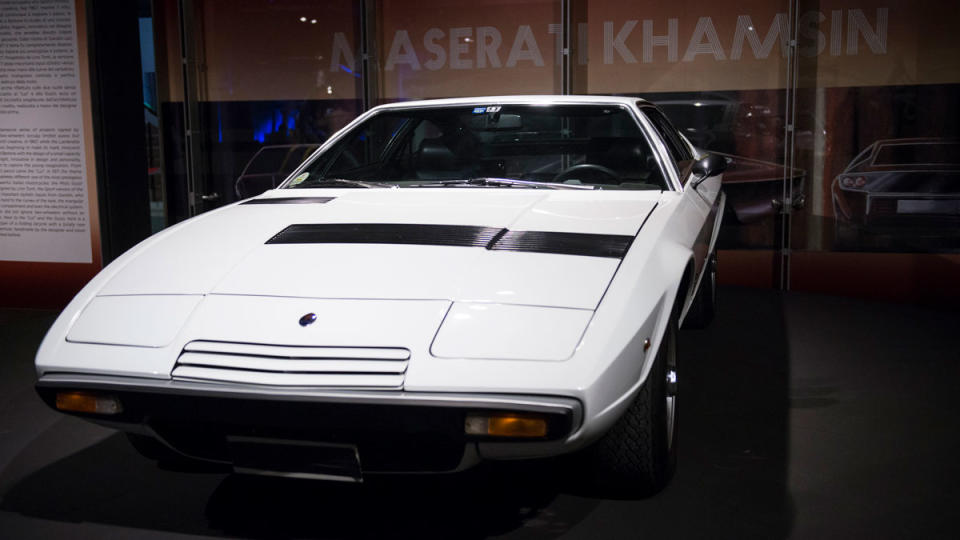
The first Maserati designed by Bertone was unveiled at the 1972 Turin Auto Show. Its elegant shape reflected the wedge-focused design sensibility of Gandini, who added a brilliant asymmetric flourish to the hood louvers and brought up the rear with a transparent glass Kamm tail. A 2+2 GT, it was the final car developed under Giulio Alfieri, Maserati’s head of engineering during the period, who used the drivetrain and V-8 engine from the Ghibli. Maserati’s owner Citroën brought its unfortunate hydraulic systems to the party, which probably seemed like a good idea at the time. Thankfully, none of that detracted from the beauty of the Trident’s most elegant GT. Only 435 examples were made through 1982.
Renault 5 Turbo
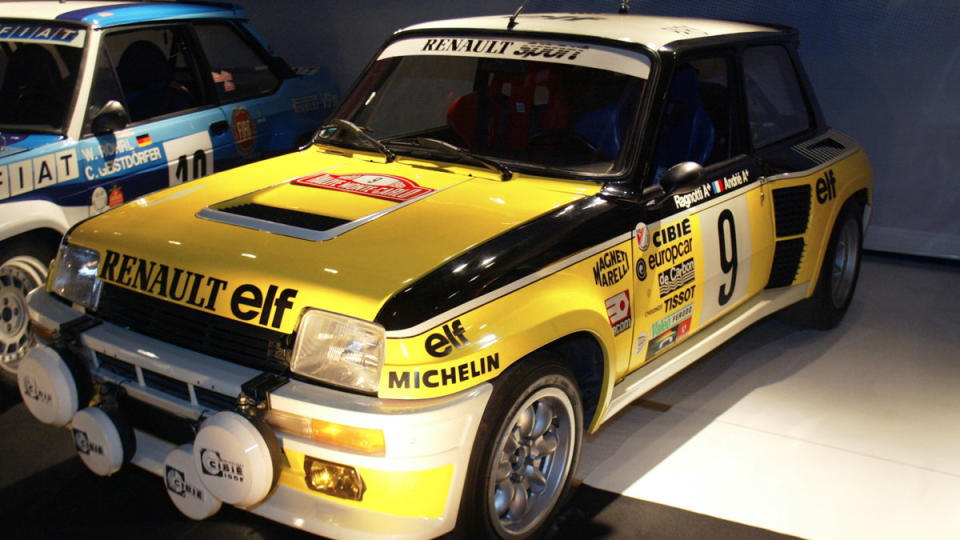
It wasn’t just Italian cars that flowed from Gandini’s pen. His work for Citroën and Renault was especially notable, and the pugnacious Renault 5 Turbo—launched in 1980—broke new ground as the hottest hatch of its era. Appearing almost as wide as it was long, the squat hatchback was designed at Bertone by Marc Deschamps under the guidance of chief designer Marcello Gandini. Although based on the quotidian Renault 5 (called Le Car for the U.S. market), it was designed for rallying, and it was an entirely different machine beneath its flared bodywork, featuring an inline-four, turbocharged engine behind the driver.
Lamborghini Diablo
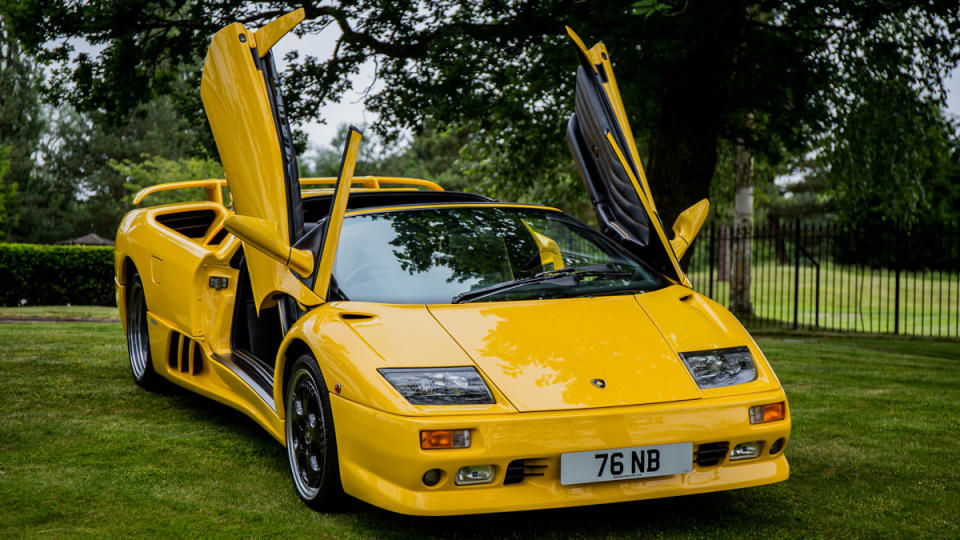
Gandini’s last series-production Lamborghini was a clear departure from its predecessor the Countach, although the Diablo was initially a wedge-shaped aggressor that would become yet another poster car. The production version was softened (emasculated) by Chrysler’s styling team when the American manufacturer took control of the foundering Italian marque in 1987. Gandini, disappointed by the compromises made to his original design, saw his initial ideal realized by the short-lived Cizeta-Moroder V16T. Still, the Diablo was Lamborghini’s most successful model until the advent of the Murciélago, with more than 2,900 units made in a multitude of variants from 1990 to 2001. Ripples from the impact of its design lasted well into the 21st century, and it’s impossible to imagine contemporary supercars without there having been a Diablo that came before them.
Best of Robb Report

